In order to describe your clothing, the general pattern is:
[colour] の [clothing item name] を きて/はいて/かぶって/かけて/して います。
or
[pattern] の [clothing item name] を きて/はいて/かぶって/かけて/して います。
If you need to describe a more complex pattern, you can use patterns like:
[back ground colour]に [pattern colour] の [pattern name] の [clothing item name] を きて/はいて/かぶって/かけて/して います。
or
[back ground colour] 地に [pattern colour] の [pattern name] の [clothing item name] を きて/はいて/かぶって/かけて/して います。
Click the highlighted part for an explanation about which verb to use.
Now, you need to know the words for colours, patterns and clothing items.
Colours
| white | 白 | green | 緑(色) |
| black | 黒 | light green | 若草色 |
| red | 赤 | yellowy green | 黄緑 |
| blue | 青 | light blue | 水色 |
| yellow | 黄色 | navy blue | 紺(色) |
| brown | 茶色 | purple | 紫(色) |
| pink | ピンク/桃色 | light purple | 藤色 |
| orange | オレンジ/橙色 | cream | クリーム(色) |
| beige | ベージュ | natural/unbleached colour | 生成り |
| gray | グレー/灰色 | dark brown | 焦げ茶(色) |
All Japanese words for colours are nouns. The first 6 above, 白 (white)、黒 (black)、赤 (red)、青 (blue)、黄色 (yellow) and 茶色 (brown) can be used as an い adjective by adding い at the end of the word. However, colour adjectives are usually used to describe a natural colour, so for clothing, using a noun is more common although it is OK to use an いadjective. In short, 黒のスカート would be more commonly used than 黒いスカート.
If you have to mention more than 1 colour, you can use と (exclusive “and”) or や (non-exclusive “and”) between colours (i.e.あかとあお for “red and blue only,” and あかやあお for “red, blue and something else”).
“Dark” and “light” in colours are often described as 濃い and 淡い respectively but like “light blue” and “dark brown” above, there may be a different word to describe a particular colour.
- dark orange: 濃いオレンジ
- light pink: 淡いピンク
Patterns
In Japanese both 模様 and 柄 are for the English word “pattern” but they are used differently.
- 模様 is a general word for a pattern drawn on any surface. When the word 模様 is used for clothing, it is usually a generally recognised pattern like:
- 水玉模様: polka dots – in 水玉模様, dots are usually placed regularly. Some people describe irregular dots as 不規則な水玉模様
- 幾何学模様: geometrical figures
- 市松模様: two-tone check (see below)
- 縞模様: stripes (see below)
When it is clear that you are talking about the pattern of your clothing, the word 模様 is often omitted from the sentence.
- 柄 is a pattern drawn or printed on a fabric, like:
- 花柄: floral
- ヒョウ柄: leopard’s spots, leopard print
- [noun]の柄: with (a) picture(s) of [noun]
Other Patterns (the words which are not used with the word 模様 or 柄)
- 無地 means “plain” in clothing. So a “plain black” skirt can be (the word in the brackets can be skipped):
- 黒の(無地の)スカート
- 黒無地のスカート
- ストライプ or 縞 or 縞々: stripes (ストライプ or 縞 or 縞々 are interchangeable)
- 縦縞: vertical stripes
- 横縞: horizontal stripes
- チェック or 格子: check, checkered – see different checks below
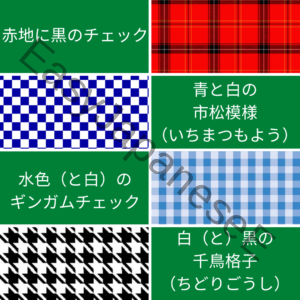
(top)
赤に 黒の チェック
If you want to mention white as well, 赤(じ)に 白と 黒の チェック
(2nd)
青と 白の いちまつもよう (all blocks are of the same size and only 2 colours)
(3rd)
みずいろ (と白)の ギンガムチェック
As gingham is usually a colour and white, としろ can be omitted.
(bottom)
白と 黒の ちどりごうし or
白黒の* ちどりごうし or
黒と 白の ちどりごうし
*for “black and white”, you can say 白黒(の) without の in between but you can’t say 黒白
Combination of Colours and Pattern
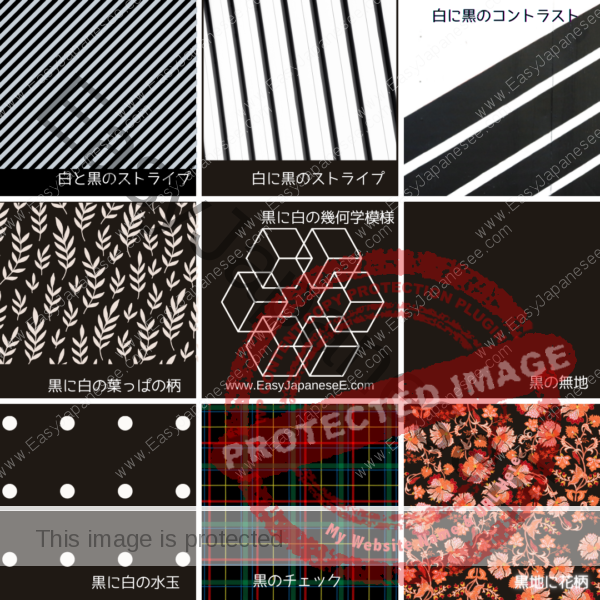
(top left) 白と 黒の ストライプ* or 黒と白の しま* or 白黒の しましま*
(top middle) as the white is more predominant, 白(じ)に 黒の しま*
(top right) “contrast” is not a pattern but if 2 colours make a contrast and it cannot be described in any other way, you can use the katakana word コントラスト like a name of a pattern.
(middle left) 黒に 白の はっぱの がら
(middle middle) 黒に 白の きかがくもよう
(middle right) 黒の むじ or 黒むじ
(bottom left) 黒に白の みずたま
If the dots are in various colours 黒に いろいろな いろの みずたま (いろいろな is a なadjective for “various”)
(bottom middle) 黒(じ)の チェック or 黒(じ)に みどりや赤の チェック
(bottom right) 黒(じ)に はながら or 黒(じ)に ピンクや赤の はながら
Clothing Items
Example Sentences
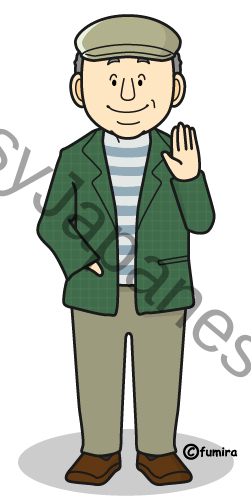
ベージュの ぼうしを かぶっています。
みどり(に 白の チェック)の ジャケットを きています。 (If you ignore the white grid pattern, skip the part in the brackets)
グレーと みずいろの よこじまの Tシャツを きています。
(If gray parts are wider than the blue parts, グレーに みずいろの よこじまの Tシャツを きています。)
ベージュの ズボンを はいています。
ちゃいろの くつを はいています。
If you don’t remember what verb to use for each item of clothing, click here.
If you liked this post, please share it with your friends through your social media accounts.
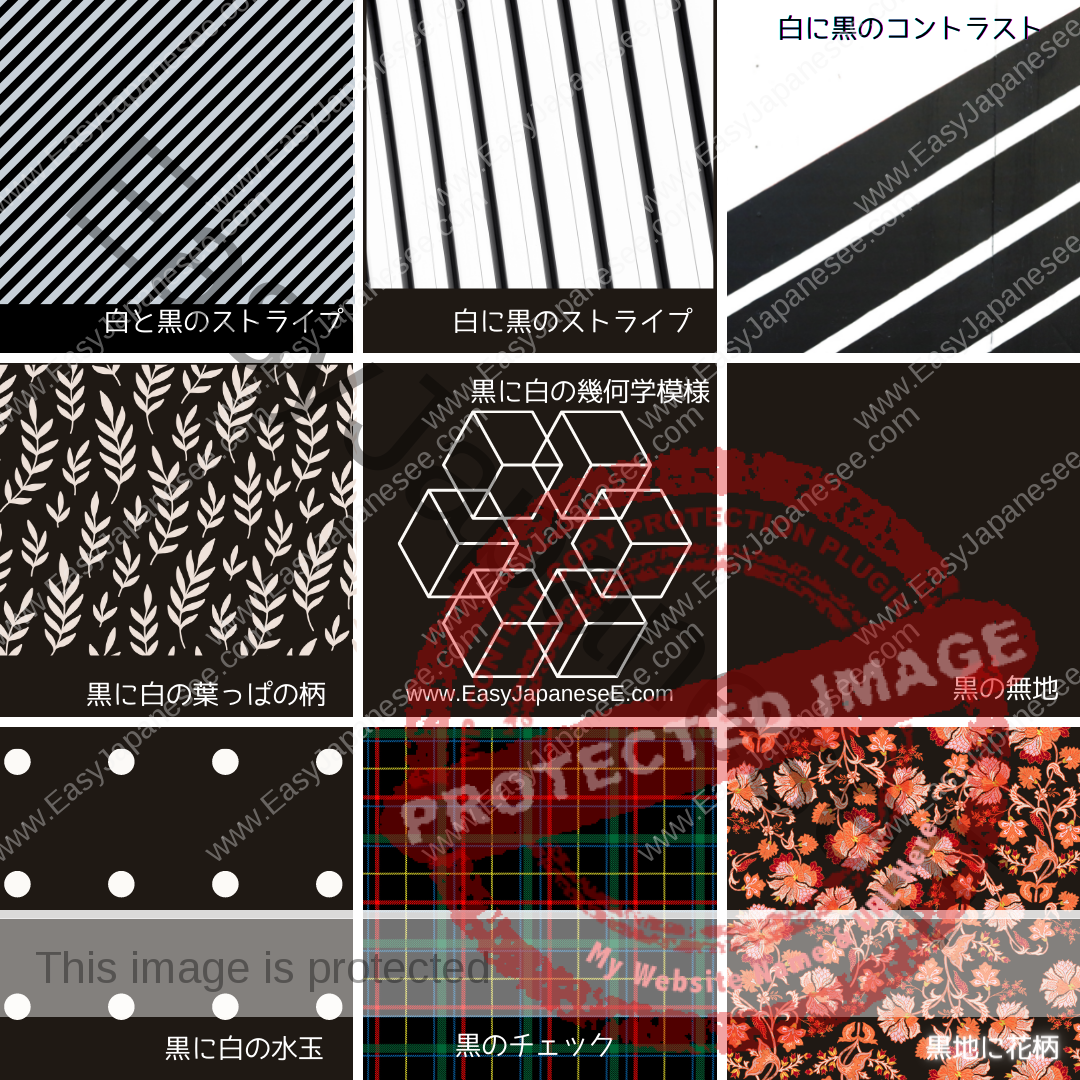
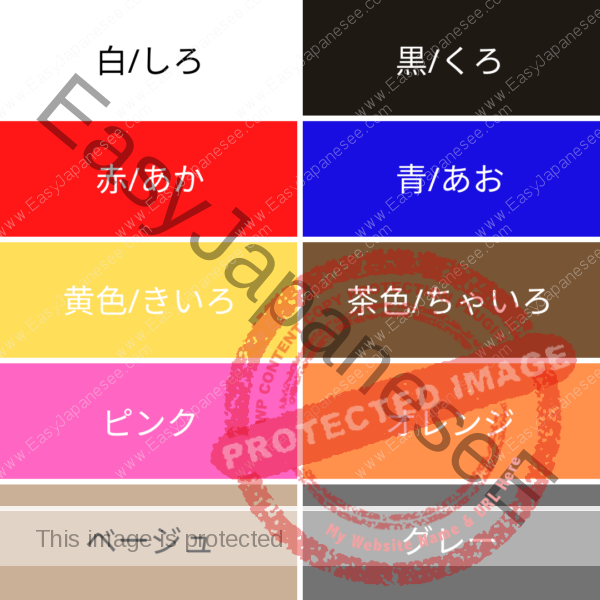
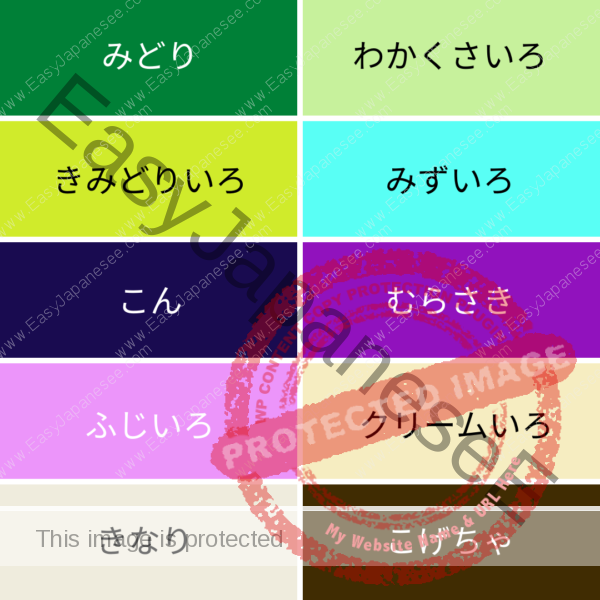
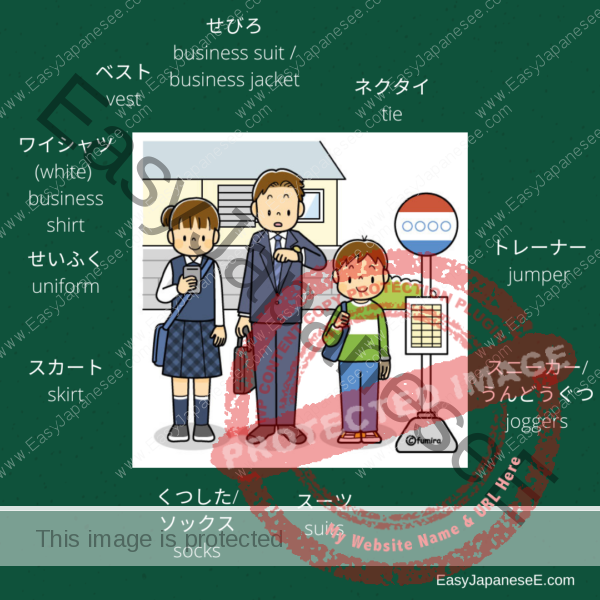
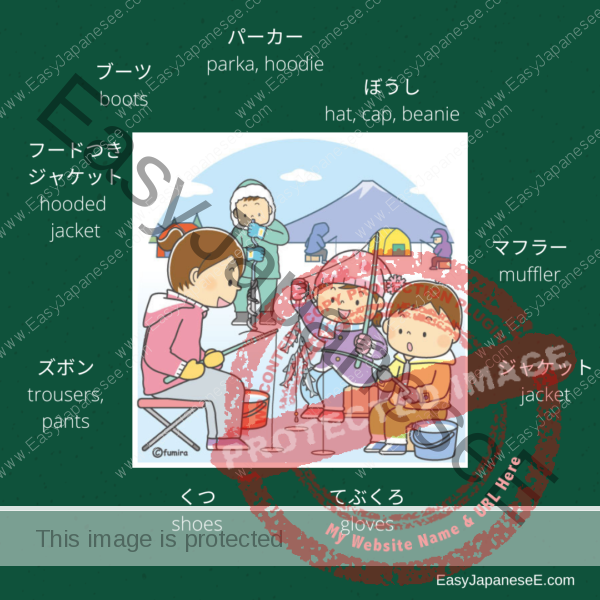
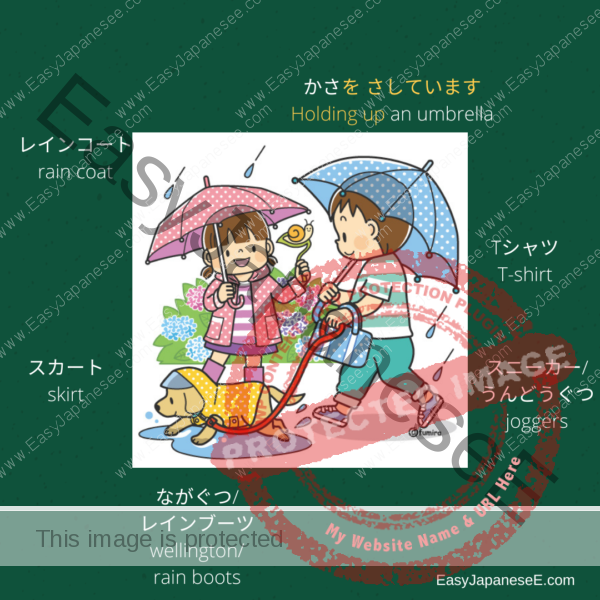

I forgot to mention lengths of sleeves. As wearing kimono has strict rules about when to wear what, wearing short sleeves in winter and long sleeves in summer used to be frowned upon.
長袖/ながそで – long sleeves
半袖/はんそで – short sleeves
七分袖/しちぶそで – 3/4 sleeves
ノースリーブ or 袖なし/そでなし – no sleeves
フレンチスリーブ – short sleeves that are coming out of the body parts without any seam between the sleeves and body parts.